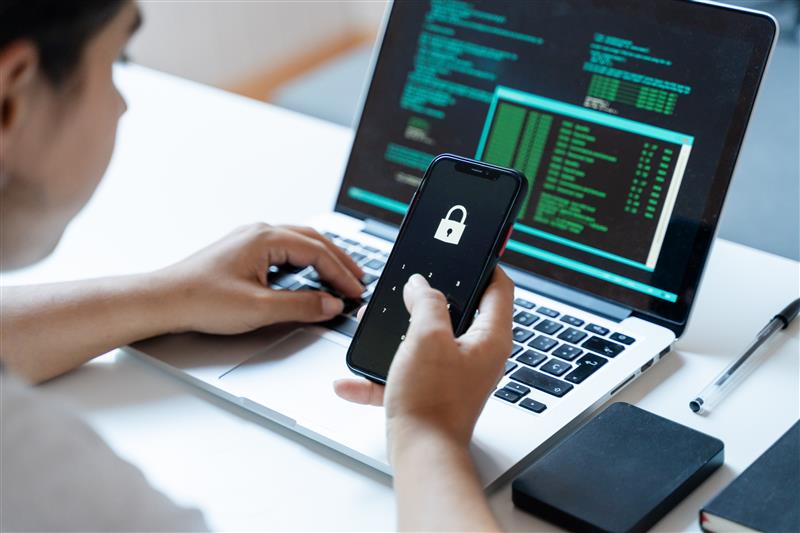Security For Smart Home: How to Protect It From Identity Thieves

In the rush to fill our homes with intelligent devices ranging from voice-activated assistants to connected coffee cups to smart TVs, we seem oblivious to the security risks. These smart devices could be used as spy tools, opening doors for cybercriminals to steal personal information and identities. They increase ways to listen in to your private conversations, offering more opportunities for data theft.
With several recent data breaches hitting the headlines, it's reasonable to worry about home device protection. Amazon is a perfect example of IoT’s security risks, with the FTC vs. Amazon Ring settlement for alleged privacy and security violations and the Alexa Violations of the Children’s Online Privacy Protection Act Rule (COPPA Rule).
Transmitting data to third parties increases the risk of that data being misused for other purposes, accessed by unauthorized parties, and not being properly encrypted or protected. This leaves your data vulnerable to hacking or other malicious activities. Therefore, you need to take steps to protect your privacy and identity, by securing IoT devices in your digital home against hackers.
How to secure your smart home
Secure your internet router
First up, according to the Federal Trade Commission, smart home safety starts with your router:
- Select a router with advanced security features: Research and choose a router that offers advanced security features, such as built-in antivirus and spyware protection.
- Change the default settings: Change the default administrative username, password and network name to something unique. Don’t use usernames or passwords with your name, address, or personal data.
- Enable encryption: You can enable encryption by going to your administrative settings, and then to your wireless security settings.
- Check for updates: Remember to keep checking for hardware and software updates.
Create a separate network for your smart devices
Make sure to create a separate network for your smart products. That means if hackers gain access through a connected device, they can’t access your computer and the treasure chest of valuable personal information it contains because it’s connected to a different network.This can be done by accessing the Wi-Fi settings from your provider, or through a Zigbee or Z-Wave private smart mesh. These are wireless open protocols developed specifically for smart devices and operate on a different network entirely than your home Wi-Fi network. Of course, make sure a different password protects each network.
Secure your IoT devices
Create strong account passwords
You need to create a strong and unique password for every single smart device. You may need the help of a password manager to help with this process, as it’s impossible for most of us to remember every password.If a device offers two-factor authentication, then enable it. Two-factor authentication adds an extra layer of security to your online accounts beyond just passwords, reducing the risk of unauthorized access.
Activate privacy features in your devices
Take advantage of your device’s privacy and security features. Enable encryption or set up a passcode lockout to add another layer of protection to your device. Then go into the settings and activate the privacy options.Make sure that the manufacturer can’t share your data with others. Check these settings regularly in case they have defaulted back to open settings. Also, update software as soon as a release is available as these often include patches to fix privacy and security flaws.
Turn off microphone and cameras when not in use
Many smart devices have a camera or microphone built-in and these are always on. So, heed the advice of many, including the FBI and cover the camera when it’s not in use. You should also turn off the microphone on intelligent devices, mute speakers and regularly ask any voice-activated products to delete your data.
Disable any other feature in your devices that you don’t use and disconnect all devices not in use from your networks. Treat this step as part of your routine akin to brushing your teeth every night!The convenience offered by connected devices has changed the way we all live. As you and your family continue to incorporate smart devices, you must make sure that you are not providing easy access to sensitive information that can then be exploited by cybercriminals. By following these steps, you can enjoy the myriad of benefits without worrying about the risks.
Protect your smart home with IDShield
IDShield can help you secure you and your family’s information. Rather than waiting and hoping that nothing goes awry, why not make sure that you're in control and that there are no open doors or windows inviting cybercriminals in!The following are ways in which IDShield can support your smart home security:
- Cybersecurity and device protection: Protect your devices with VPN, malware protection, parental controls, and password protection.
- VPN Proxy One: Get convenient protection anywhere you connect online through encrypted communications provided by Trend Micro’s VPN Proxy One.
- Password Manager: Get multiple device protection and privacy for your digital life with our Password Manager service that manages and encrypts passwords.
- Reputation Manager: This tool scans certain social media platforms for content that could damage your online reputation and provides tools for improving your accounts.
- Full-Service Restoration and Unlimited Consultation: If your identity is stolen, you get direct access to a Licensed Private Investigator who will work to restore your identity to its pre-theft status. You can also talk to an identity theft specialist about any identity theft or online privacy concerns.
IDShield also offers 24/7 credit and dark web monitoring and up to $3 Million Identity Theft Protection Plan.As the industry standard, we offer a variety of plans to suit your needs. View our plan options here!
Pre-Paid Legal Services, Inc. (“PPLSI”) provides access to identity theft services through membership-based participation. IDShield is a product of PPLSI. All Licensed Private Investigators are licensed in the state of Oklahoma. The information made available in this blog is meant to provide general information and is not intended to provide professional advice, render an opinion, or provide a recommendation as to a specific matter. The blog post is not a substitute for competent and professional advice. Information contained in the blog may be provided by authors who could be third-party paid contributors. All information by authors is accepted in good faith; however, PPLSI makes no representation or warranty of any kind, express or implied, regarding the accuracy, adequacy, validity, reliability, availability, or completeness of such information.



